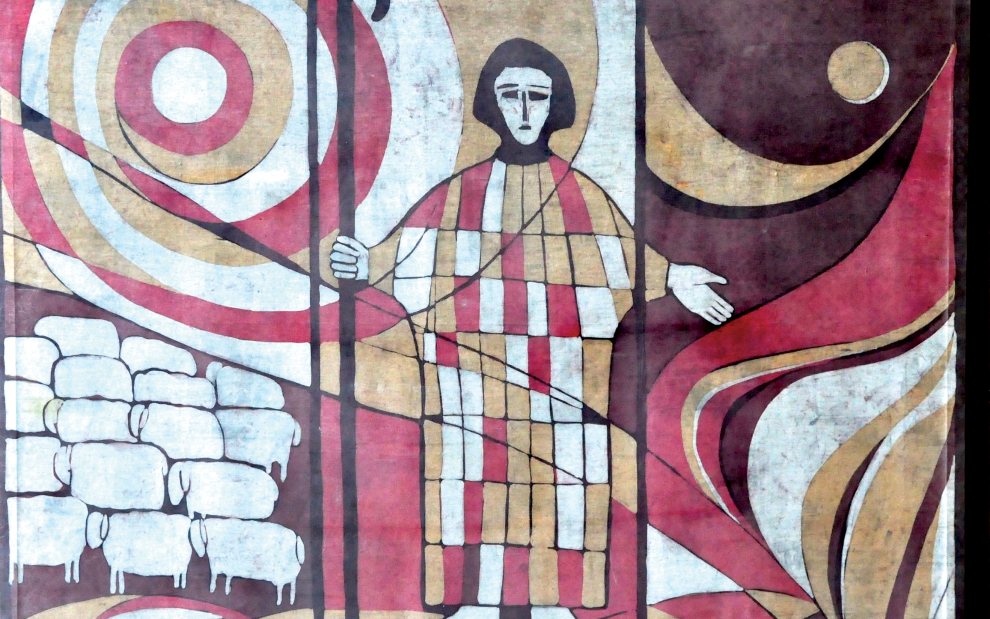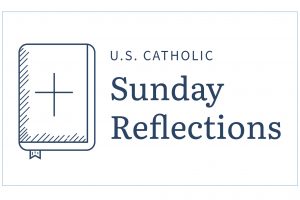On a humid February morning, about five hours north of Manila in the town of Tuba, in a region known for its abundant produce, more than 30 organic farmers gathered for their annual assembly. I was in town for a research project, and Sister Cora, one of the women religious in the community where I was staying, invited me to join her and learn more about her local community.
The Bejajeng Pansigshan Organic Producers Association is dedicated not only to improving organic farming practices but also to much more. Its vision and mission statements invoke the “need of divine guidance” alongside a commitment to the “socioeconomic, spiritual, and environmental progress of its members and families.” As I listened to their integration of faith and farming, the image of Christ the Good Shepherd felt alive among us.
While we end each liturgical year with the solemnity of Christ the King, the dominant image of Jesus in the early church was the humbler icon of the Good Shepherd. When I take my first-year students to Rome, one of the highlights is the surviving third-century fresco of the Good Shepherd in the catacombs of St. Priscilla: Jesus as a man of the land, feeding sheep, surrounded by trees and birds. Liturgically, we celebrate the Good Shepherd on the fourth Sunday of Easter. Often preached as a call to vocations in the priesthood and religious life, the image of the Good Shepherd, according to St. Óscar Romero, is a call to personal responsibility for all the people of God.
In contrast to those who call for a more muscular Christianity seeking physical dominance and power, Jesus casts himself as the Good Shepherd. Amid injustice and indifference, St. Óscar Romero preached about the “light of the Good Shepherd,” reminding us that even Christ the King is not triumphalist: “Christ lives. Christ has risen, and death no longer has dominion over him. But this Christ presents himself as the Good Shepherd.”
“I am the good shepherd. I know my own, and my own know me, just as the Father knows me, and I know the Father. And I lay down my life for the sheep,” reads John 10. Farmers know their land and all of creation in their care. Attending to the health of the land and the people, these families in Tuba actively resist the technocratic paradigm, refusing to be ruled by the drive for growth for its own sake. They want to be successful, earn higher, fairer prices for their crops, and secure just contracts.
At the same time, as I listened over lunch, I realized that for them, organic farming is as much about healing the Earth as it is about healthy eating. The sacrifices these farmers make in pursuit of that goal provide an instructive model of integral ecology—and an example of the Good Shepherd.
For St. Óscar Romero, “Christ is the Good Shepherd, living today as a shepherd who is in love with his flock.” In the farmers I met, love for the land and their community was palpable. Their lives bore witness to the incarnate link between human dignity and the dignity of creation. Acutely aware of the climate crisis, they were actively working to be instruments of health and healing for all of God’s creation.
As a country and global community, we are living in a precarious moment. Just when deeper collaboration and cooperation are desperately needed, the United States is turning toward greater isolation and indifference. As a nation, we have lost our sense of the common good as a shared project in which we all play a part. While I was in the Philippines, the Trump administration implemented a broad freeze on foreign aid, including $47 million in USAID funding previously promised to various organizations and projects in the country. This action affected essential health services for many people, including those relying on the U.S. President’s Emergency Plan for AIDS Relief (PEPFAR).
Casting humanitarian workers, civil servants, and other public servants—who have dedicated their lives to developing expertise in service of their communities—as an amorphous bureaucratic enemy is particularly alarming. This rhetoric is designed to alienate us from our neighbors, eroding our ability to work together. These workers are not faceless, distant drones but our neighbors: social workers at the Department of Veterans Affairs, special education specialists overseeing individualized education plans for children, medical researchers working to cure diseases, and humanitarian aid workers embodying the best of the American spirit.
The Good Shepherd shows us that care for others and humility are not weaknesses but strengths. He does not dismiss suffering but accepts that “there is no liberation without the cross” and calls us to fight against injustice. In this moment, we need Jesus the Good Shepherd more than ever.
This article also appears in the April 2025 issue of U.S. Catholic (Vol. 90, No. 4, pages 40-41). Click here to subscribe to the magazine.
Image: Wikimedia Commons











Add comment